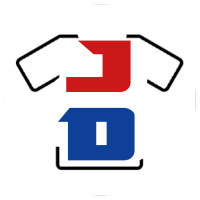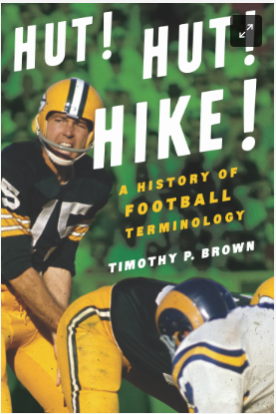The game of baseball has a long and storied history of its players, teams and managers. The stats, the championships, pitching duels and so much more make this one of the most interesting items to study and watch.
Sports History
Jimmy Rollins Baseball Superstar Shortstop
Rollins' career began in the shadow of veterans. Drafted by the Phillies in 1996, he spent years honing his skills in the minor leagues before finally making his big league debut in 2000. Early on, his speed and defense stood out. He became the Phillies' starting shortstop in 2001, quickly establishing himself as a defensive force with smooth fielding and a strong arm.
But Rollins was more than just a glove. He blossomed into a dynamic offensive threat. In 2001, he took over the leadoff role, sparking the Phillies' lineup with his ability to get on base and create havoc on the basepaths. He led the National League in stolen bases in 2001, showcasing his electrifying speed.
Rollins' offensive prowess continued to develop. He became a consistent hitter, capable of spraying line drives to all fields. 2007 proved to be his pinnacle year. He captured the National League Most Valuable Player award, leading the Phillies to their first division title in 14 years. His electrifying play on both sides of the ball made him a true force on the field.
The following year, in 2008, Rollins etched his name even deeper in Phillies lore. He played a pivotal role in the team's World Series championship run. His postseason heroics, including two leadoff home runs, were instrumental in the Phillies' victory.
The life and career bio of Jimmy Rollins. Born November 27, 1978, in Oakland, California, was Baseball legend Jimmy Rollins.
Rollins played Shortstop and a bit of Second Base wearing the number 11 on the Philadelphia Phillies (2001-14) and the Los Angeles Dodgers (2015) for 14 seasons as he batted 0.264 for his career, had an On Base percentage of 0.418, with 231 career Home Runs, and 4 Gold Glove Awarded Seasons. Jimmy Rollins is one of the top MLB players to have worn Jersey Number 11.
Don Sutton Precision Baseball Pitching
Early Days & L.A. Legacy: Born in Alabama in 1945, Sutton honed his craft in college before joining the Dodgers in 1966. He quickly established himself as a reliable starter, racking up double-digit wins in 21 of his 23 seasons. His pinpoint control, characterized by his low walk totals, complemented his powerful breaking pitches, making him a nightmare for opposing hitters. He was a key contributor to the Dodgers' five National League pennants and their 1988 World Series title.
Beyond L.A.: After 16 seasons with the Dodgers, Sutton embarked on a journeyman phase, playing for the Houston Astros, Milwaukee Brewers, Oakland Athletics, and California Angels. Despite changes in scenery, his consistency never wavered. He won at least 11 games in every season except 1983 and 1988, solidifying his reputation as a dependable arm. He even notched his 300th victory with the Angels in 1986, becoming only the ninth pitcher to reach the milestone at the time.
Baseball Hall of Fame pitcher Don Sutton's life and career are recorded in this bio. His MLB career started with the Los Angeles Dodgers, Houston Astros, Milwaukee Brewers, Oakland Athletics, and the California Angels. He was an AS MVP, four-time All-Star, and held the ERA title in one season. Sutton is one fo the top MLB players to have worn the Number 20 Jersey.
MLB Innovator Executive
Revolutionizing the Game:
-Breaking the Color Barrier: Rickey's most monumental achievement was signing Jackie Robinson to the Brooklyn Dodgers in 1945, effectively integrating Major League Baseball and paving the way for countless Black players to follow. This act of courage and foresight forever changed the face of the sport.
-Pioneering the Farm System: Rickey is credited with developing the modern minor league farm system, providing a structured pathway for player development and talent acquisition. This revolutionized how teams built their rosters and ensured a steady stream of young talent.
-Embracing Innovation: Rickey was a relentless innovator, introducing concepts like statistical analysis, batting helmets, and batting cages into the game. He recognized the value of data and technology in player evaluation and team preparation.
Leadership and Legacy:
-Executive Prowess: Rickey's career spanned numerous teams, including the Cardinals, Dodgers, and Pirates. He built championship-caliber teams throughout his tenure, winning four World Series titles and multiple pennants. He was a shrewd negotiator and astute talent evaluator.
-Inspiring Others: Rickey's commitment to racial equality extended beyond baseball. He advocated for Civil Rights, inspiring athletes and fans alike to fight for social justice.
-Enshrined in History: Rickey's contributions were recognized with his induction into the Baseball Hall of Fame in 1967. He remains a revered figure in the sport, honored for his courage, vision, and dedication to player development and social justice.
A Journey Through the Houston Astros' Uniform Evolution
Colt .45 Era (1962-1964):
-Classic and elegant: Think navy pinstripes with orange accents, paired with a navy cap featuring a white H over an orange star.
-A nod to Texas heritage with the Texas flag on the road jersey sleeve.
Early Astros Era (1965-1974):
-Shooting Star logo takes center stage, orbiting baseballs on the home jersey sleeve and emblazoned on the road cap.
-Orange becomes the primary color, paired with navy for a bold and vibrant look.
Psychedelic 70s (1975-1986):
-Embrace the era's flair with orange, yellow, and white stripes adorning the home jersey.
-The iconic rainbow-patterned pullover jersey arrives in 1975, becoming a fan favorite and pop-culture icon.
Shoulder Rainbows and Beyond (1987-2012):
-Rainbow tones move to the shoulders on a more traditional white home jersey.
-1994 sees a complete redesign with brick red and black dominating, reflecting the move to Enron Field.
-Various throwbacks to earlier eras become popular for Friday home games.
Back to the Roots (2013-Present):
Returning to the AL, the Astros adopt a look reminiscent of the 1960s with navy pinstripes and orange accents.
Homage to the past continues with occasional throwback jerseys and caps.
A Rare Moment in Baseball History
November 6, 1938, was a day of a first in baseball, even though the MLB season was long done. The very famous Joe DiMaggio of the New York Yankees finally got to play a game where his less-remembered brothers, Vince and Dom, were on his team. The siblings teamed up in a West Coast charity exhibition made of All-Stars from professional teams.
Wilbert Robinson
Joe Cronin
This legend was a seven-time MLB All-Star and later a manager. He played for the Pittsburgh Pirates, Washington Senators and the Boston Red Sox; he was a player-manager for 13 seasons (1933–1945), and served as manager for two additional seasons (1946–1947).
Cronin also served as an executive, including a term as American League President from 1959-73.
The Baseball Career of Grover Alexander
Alexander's success stemmed from a potent combination of talent and grit. He possessed a deceptive curveball and a fastball that kept hitters guessing. More importantly, he displayed a fierce competitive spirit that pushed him to excel, even in the face of adversity. His work ethic was legendary, often pitching complete games on short rest. This relentless drive earned him the respect of his teammates and the fear of opponents.
Beyond wins, Alexander's accolades speak volumes. He won three pitching Triple Crowns, a feat signifying the league leader in wins, earned run average (ERA), and strikeouts. He led his team to the 1926 World Series championship with the St. Louis Cardinals, a crowning achievement in a career filled with individual and collective triumphs.
Despite a decline in later years, Alexander retired in 1930 with a remarkable .642 winning percentage, ranking among the highest in baseball history. His dedication to the game and fierce competitiveness cemented his place in the Baseball Hall of Fame in 1938.
Mudcat Grant Iconic Baseball Pitcher
Born in 1935, Grant's journey began far from the bright lights of MLB stadiums. He honed his skills in Florida, eventually attending Florida A&M University. Denied the opportunity to showcase his talent in the major leagues due to segregation, he played for the Indianapolis Clowns, a prominent Negro Leagues team. Here, he earned the nickname "Mudcat" – a playful reference to his childhood nickname "Mud" and his deceptive curveball, a pitch that seemed to disappear like a fastball sinking into mud.
In 1958, with the dawn of the Civil Rights Movement and the integration of baseball, Grant finally broke into the majors with the Cleveland Indians. He quickly established himself as a force to be reckoned with. His smooth delivery, sharp fastball, and that signature curveball made him a nightmare for opposing batters.
Grant's finest season came in 1965 with the Minnesota Twins. He became a dominant ace, leading the league in wins (21) and complete games (10) while compiling an impressive 3.04 ERA. He was a key factor in propelling the Twins to the World Series, where he even contributed at the plate, becoming only the second American League pitcher to hit a home run in the Fall Classic.
Mudcat's career spanned 14 seasons, during which he played for seven different teams, including the iconic Oakland Athletics of the late 1960s. He later reinvented himself as a closer, recording 24 saves for the A's in 1970 – one of the few pitchers in history to achieve both 20 wins and 20 saves in a single season.
Born August 13, 1935, in Lacoochee, Florida, was MLB legendary Pitcher, Jim "Mudcat" Grant. He was an MLB All-Star 1963, 65 and played ball for the Cleveland Indians, Minnesota Twins, as well as some short stints with the Montreal Expos, Los Angeles Dodgers, St. Louis Cardinals, Oakland Athletics, and Pittsburgh Pirates.
Grant's talent went far beyond the baseball diamons as he also was a talented singer and writer with his book titled Black Aces.
Sam Crawford Early Baseball Star
Crawford's journey began in the minor leagues, where his potent bat quickly attracted attention. He debuted with the Cincinnati Reds in 1899 and showcased his prowess immediately. Though his first entire season (1900) didn't reasonably light the world on fire, 1901 saw him explode. Leading the league in home runs (16, a significant feat in the Deadball Era) and RBIs (104), Crawford announced himself as a force to be reckoned with.
However, a pivotal moment in his career unfolded in 1903 when he made a significant move to the fledgling American League's Detroit Tigers, teaming up with the legendary Ty Cobb. Despite the Tigers not reaching the pinnacle of success during Crawford's time, their offensive prowess was undeniable. Crawford and Cobb formed a formidable partnership, striking fear into the hearts of opposing pitchers for over a decade.
While Cobb often stole the spotlight with his aggressive base running and relentless batting approach, Crawford's consistency was remarkable. He never led the league in batting average, but he consistently finished near the top, never dipping below .292 from 1905 to 1915. This stretch also saw him lead the league in triples six times, a record that still stands today. His ability to hit for average and power, coupled with his base-stealing prowess, made him a nightmare for opposing teams.
Crawford's legacy extends beyond statistics. He was a fierce competitor known for his intense focus and determination. Despite playing in a low-scoring era, he amassed impressive power numbers, hitting 51 inside-the-park home runs – a testament to his blazing speed on the basepaths. He was also the first player to lead the National League (1901) and American League (1908) in home runs.
Sam Crawford retired in 1917 after a long and illustrious career. He finished with a .309 batting average, 2,961 hits, 97 home runs, and 309 triples – the most in baseball history. While overshadowed by flashier players of his time, Crawford's consistent excellence and mastery of hitting solidified his place among baseball's greats.
Born April 18, 1880, in Wahoo, Nebraska, was Baseball Hall of Fame Right Fielder Sam Crawford. Nicknamed "Wahoo Sam", for reference to his hometown, the left-handed Crawford, took advantage of the competing AL and NL for his services and joined the Detroit Tigers and played for Detroit, primarily in right field, from 1903 to 1917. One of the top batters of the era, Sam led the American League in home runs twice and in runs batted in three times. He still holds the MLB record for most career triples with 309. Though they were teammates Crawford and Ty Cobb had an immense rivalry for batting titles, it paved the way for Detroit to win three AL Pennants from 1907-09.
February 10 Jersey Numbers

Lets see what team sport athletes made history on February 10. Sports history is made every day of the year. We will preserve at least a small sampling from some great athletes every day based on the uniform number they wore. 34 - 23 - 25 - 19 February 10, 1920 - Major League Baseball o...
- The use of a "banner" counts as 10 words!

(image) The 1923 Notre Dame Badin Hall football team were the (co-) interhall champions of the 1923 season. They tied Sophomore and Brownson halls and were awarded the championship on a random draw. There are conflicted reports of whether the Badinites received the championship trophy but not the ...
- The use of a "banner" counts as 10 words!
A 1933 Northern Ireland Womens Hockey Team
February 9 Jersey Numbers

Sports history is made every day of the year. February 9 is no exception. We will preserve at least a small sampling from some great athletes every day based on the uniform number they wore. 29 - 2 - 7 - 24 February 9, 1916 - Baseball's National League voted and subsequently sh...
- The use of a "banner" counts as 10 words!
February 8 Jersey Numbers
.jpg?https://jerseydispatch.com/pfeL/p/c312642c0431e75b485e432232c99c1c/website/Daily-Sports-Uniform-Number-History/February/February-8-Jersey-Numbers/Images/.Basketball_at_Pas-en-Artois,_France,_1918_(20166469838).jpg)
Sports history is made every day of the year. We will preserve at least a small sampling from some great athletes every day based on the uniform number they wore. 7 - 15 - 99 - 33 February 8, 1963 - It became offical on this day that the American Football League franchise formerly calle...
- The use of a "banner" counts as 10 words!
.jpg?https://jerseydispatch.com/pfeL/p/c312642c0431e75b485e432232c99c1c/website/Sports-History-Photo-of-the-Day/February-Images/February-8-Image/images/.640px-Arctic_Sisterhood_Basketball_banner,_Nome_(NOWELL_200).jpg)
This image is courtesy of Wikimedia Commons with a Caption on the image: Arctic Sisterhood BasketBall Team, Nome, Alaska, 1908-09. F.H. Nowell, 5758 (image) This classic image of a group of ladies from Nome, Alaska depicts the basketball gear for women in 1908. The long stockings as was pro...
- The use of a "banner" counts as 10 words!



.jpg?https://jerseydispatch.com/pfeL/p/c312642c0431e75b485e432232c99c1c/website/Sports-History-Photo-of-the-Day/February-Images/February-9-Image/images/.640px-Armagh_Girls_High_School_Hockey_Team_(40590305352).jpg)



